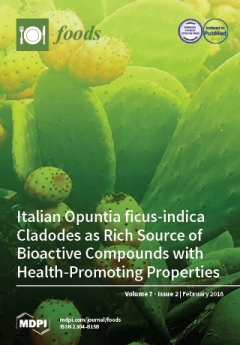This study analyzed chemical components and investigated the antioxidant and antimicrobial activities of fourteen vegetable edible oils marketed in Japan. High-performance liquid chromatography (HPLC) was used to identify and quantify principal phenolic acids and flavonoids. In the 1,1-diphenyl-2-picrylhydrazyl (DPPH) radical scavenging assay, sunflower,
[...] Read more.
This study analyzed chemical components and investigated the antioxidant and antimicrobial activities of fourteen vegetable edible oils marketed in Japan. High-performance liquid chromatography (HPLC) was used to identify and quantify principal phenolic acids and flavonoids. In the 1,1-diphenyl-2-picrylhydrazyl (DPPH) radical scavenging assay, sunflower, safflower, canola, soybean, Inca inchi, sesame, and rice bran showed markedly greater activity, whilst the percentage of lipid peroxidation inhibition (LPI%) in sunflower, canola, cotton, grape, flax, perilla, Inca inchi, perillartine, and rice bran were significantly higher than other oils. Maximum total phenol content (TPC) was recorded in flax, followed by perillartine, rice bran, and perilla, whereas total flavonoid content (TFC) was the greatest in Inca inchi and sesame. Benzoic acid was the most common constituent, followed by vanillic acid,
p-hydroxybenzoic acid, ferulic acid, and
p-coumaric acid. On the other hand, luteolin was the most abundant flavonoid, followed by esculetin, myricetin, isoquercetin, and kaempferol, while fisetin was detected only in sunflower. In general, all of the edible oils showed antimicrobial activity, but the growth inhibition of
Staphylococcus aureus and
Escherichia coli of cotton, grape, chia, sesame, and rice bran were greater than other oils.
Full article






